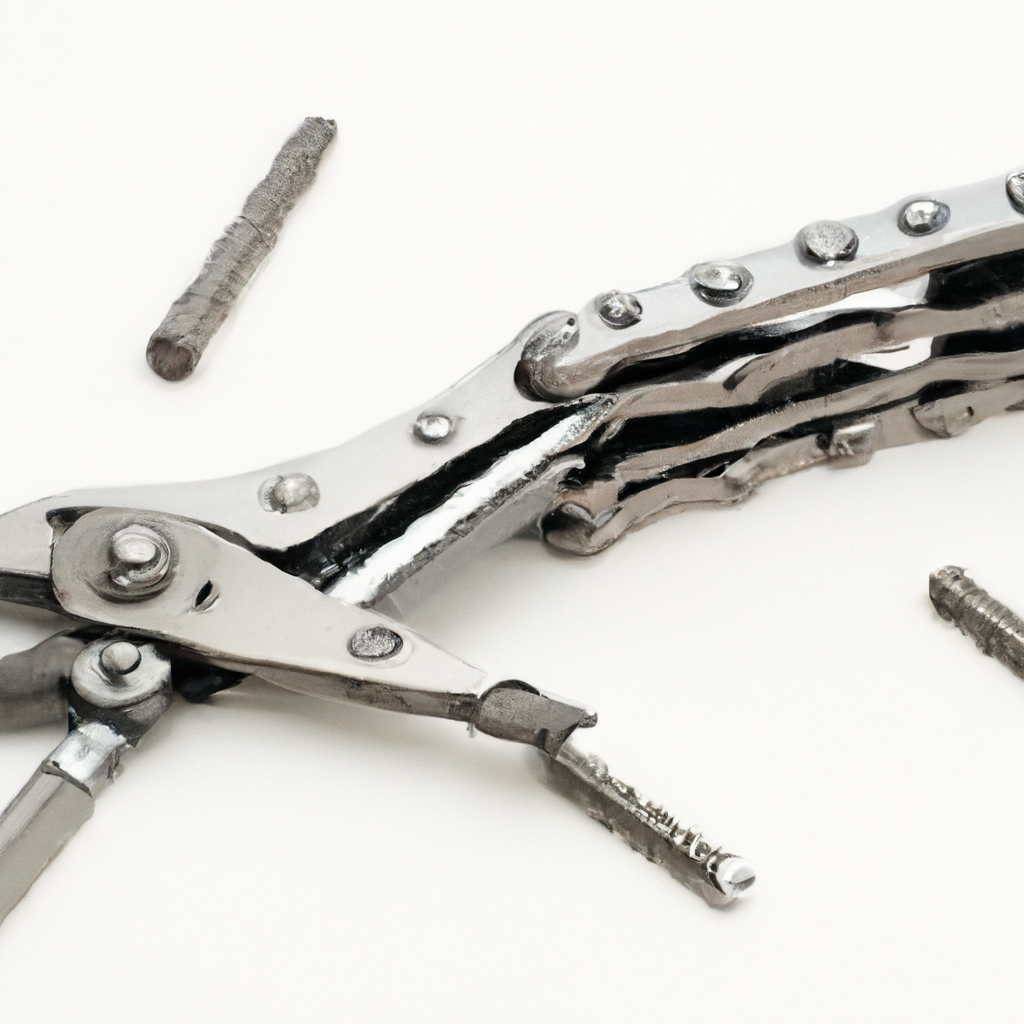If you’re new to the world of electric biking, experiencing technical difficulties with your e-bike can be frustrating. But fret not, because we’re here to help! In this article, we’ll cover some basic troubleshooting tips for common e-bike issues. Whether you’re riding in the city or off-road, these tips will provide you with the foundational knowledge to handle common problems and keep your e-bike running smoothly. So, let’s dive right in and get your e-bike back on track!
1. Battery Issues
Having issues with your e-bike battery can be frustrating, but luckily, many common battery problems can be easily resolved. Here are some common battery issues and troubleshooting tips to help you get your e-bike up and running again.
1.1 Battery not charging
If your e-bike battery is not charging, there may be a few potential causes. First, make sure the charger is securely connected to both the battery and the power source. Check for any loose connections or damaged cables. If everything seems to be connected properly and the battery still won’t charge, try using a different charger if possible. If none of these solutions work, it may be time to consider replacing the battery.
1.2 Battery not holding charge
If your e-bike battery is fully charged but quickly loses its charge, there could be a few possible reasons. First, check if there are any power-hungry accessories connected to the battery, such as lights or a phone charger. Disconnecting these accessories and trying again may solve the issue. If that doesn’t work, the battery may be reaching the end of its lifespan and need to be replaced.
1.3 Battery draining quickly
If your e-bike battery seems to be draining faster than usual, there are a few things you can check. First, make sure that your e-bike is not in a high power mode or a mode that provides excessive assistance, as this can drain the battery more quickly. Additionally, check for any power-draining accessories or components that may need to be adjusted or disconnected. If the battery continues to drain quickly, it may be worth having it tested or replaced.
2. Motor Issues
The motor is one of the most critical components of an e-bike, so any issues with it can severely impact your riding experience. Here are some common motor issues and troubleshooting tips to help you identify and resolve them.
2.1 Motor not turning on
If your e-bike motor is not turning on, first check that the battery is charged and correctly connected to the motor. Ensure that all wiring connections are secure and undamaged. If everything seems to be in order, try turning the e-bike off and on again to reset the system. If the motor still does not turn on, it may be a more significant issue, and consulting a professional may be necessary.
2.2 Motor not providing power
If your e-bike motor is turning on but not providing power, there are a few potential causes. First, check the display or control system to ensure that you are not in a low power or eco mode. If the motor is still not providing power, there may be an issue with the throttle or pedal assist system. Inspect these components for any damage or loose connections. If needed, consult a professional for further assistance.
2.3 Motor making strange noises
If your e-bike motor is making unusual noises, it could be a sign of a problem. Grinding, rattling, or squeaking noises may indicate a mechanical issue. It is essential to stop using the bike if you notice any strange sounds and have it inspected by a professional. Continuing to use the e-bike with a faulty motor can potentially cause further damage.

3. Display and Control Issues
The display and control system of your e-bike are responsible for providing you with information and allowing you to adjust settings. If you encounter any issues with the display or control system, follow these troubleshooting tips.
3.1 Display not working
If your e-bike display is not working, first check that it is receiving power from the battery. Ensure that the wiring connections between the battery and display are secure and undamaged. Additionally, check the display settings to ensure it is not in sleep mode or turned off. If the display still does not work, it may be a faulty component that requires professional attention.
3.2 Error messages on display
If you see error messages on your e-bike display, it is essential to pay attention to them. Error messages can indicate various issues, such as a faulty sensor, motor problem, or battery issues. Consult your e-bike’s user manual or contact the manufacturer for specific instructions on how to troubleshoot and resolve error messages.
3.3 Control buttons not responding
If the control buttons on your e-bike are not responding, it could be due to a connectivity issue or a malfunctioning control unit. Start by checking the wiring connections between the display/control unit and the battery. Make sure they are secure and undamaged. If the wiring connections seem fine, try resetting the system by turning the e-bike off and on again. If the problem persists, it may require professional assistance.
4. Electrical Connection Issues
Problems with electrical connections can cause various e-bike issues. Here are some common electrical connection issues and troubleshooting tips.
4.1 Loose or disconnected wires
If you experience sporadic electrical issues or components not working properly, it is crucial to check for loose or disconnected wires. Inspect all wiring connections and make sure they are firmly attached and undamaged. Secure any loose connections and test the e-bike to see if the issue is resolved.
4.2 Faulty connectors
Faulty connectors can also cause electrical problems. Inspect all connectors on your e-bike for any signs of damage, such as corrosion or bent pins. If you find any faulty connectors, they may need to be replaced. Ensure that the replacement connectors are compatible with your e-bike’s electrical system.
4.3 Corroded electrical contacts
Corrosion on electrical contacts can disrupt the flow of electricity and cause various issues. If you notice any signs of corrosion on your e-bike’s electrical contacts, clean them using an appropriate electrical contact cleaner or a mix of water and baking soda. Be sure to dry the contacts thoroughly before reconnecting them.

5. Brake Issues
Proper functioning brakes are crucial for your safety when riding an e-bike. Here are some common brake issues and troubleshooting tips to help ensure your brakes are in optimal condition.
5.1 Brakes not engaging
If your e-bike brakes are not engaging as they should, first check if there is any debris or dirt on the brake pads or brake rotors. Clean them thoroughly and test the brakes again. If the issue persists, check the brake cable tension. Adjust the tension if necessary or consult a professional bike mechanic for assistance.
5.2 Brakes squeaking or rubbing
If your e-bike brakes are squeaking or rubbing against the rotors, it may indicate misalignment or contamination. Start by inspecting the brake pads, rotors, and calipers for any signs of wear, damage, or contamination. Clean the affected parts if needed and realign them if necessary. If the problem persists, it may be time to replace the brake pads or seek professional help.
5.3 Brakes too sensitive or not responsive
If your e-bike brakes feel too sensitive (grabbing suddenly) or not responsive enough, it could be due to improper brake pad adjustment or hydraulic brake system issues. Check the brake pad alignment and adjust them as needed. If you have hydraulic brakes, ensure that they are correctly bled and properly maintained. If you are unsure how to perform these tasks, it is advisable to consult a professional bike mechanic.
6. Gearing and Shifting Issues
Difficulty shifting gears can significantly impact your riding experience. Here are some common gearing and shifting issues and troubleshooting tips.
6.1 Difficulty shifting gears
If you have trouble shifting gears smoothly, it may be due to derailleur misalignment or cable tension issues. Start by checking the gear cable tension and adjusting it if necessary. If the issue persists, the derailleur may need realignment. Consult a professional bike mechanic for assistance with more complex gear shifting issues.
6.2 Chain slipping
If your e-bike chain slips or skips gears while riding, it can be quite frustrating. Chain slipping can occur due to worn-out chainrings, cassette, or a stretched chain. If the components are worn, they may need to be replaced. Additionally, check the chain tension and adjust it if necessary. It is recommended to regularly maintain and lubricate your e-bike’s chain to prevent premature wear.
6.3 Derailleur misalignment
If your e-bike’s derailleur is not aligned properly, it can cause shifting issues. Inspect the derailleur for any signs of misalignment, damage, or bent hangers. Adjust the derailleur alignment using the appropriate tools or consult a professional bike mechanic if needed.

7. Tire and Wheel Issues
Properly inflated tires and well-maintained wheels are essential for a smooth and safe ride. Here are some common tire and wheel issues and troubleshooting tips.
7.1 Flat tires
If you have a flat tire, the first step is to locate the puncture or damage. Thoroughly inspect the tire tread for any foreign objects, such as nails or shards of glass. Once located, remove the object if possible and patch or replace the inner tube. It is also essential to identify the cause of the puncture, such as an improperly installed tire or rim tape, to prevent future flats.
7.2 Punctures or damage to the tire
If you notice punctures, cuts, or other damage to your e-bike tire, you may need to replace it. Riding with a damaged tire can compromise your safety and potentially lead to further damage. Inspect your tires regularly for signs of wear and replace them as needed.
7.3 Wheel misalignment
If your e-bike wheel feels wobbly or off-center, it may indicate wheel misalignment. Check that the wheel is properly seated in the dropout and tighten the quick-release or axle nuts if necessary. If the misalignment persists, it may be due to a damaged or bent wheel. In such cases, consulting a professional bike mechanic is recommended.
8. Suspension Issues
If your e-bike has suspension, it is essential to keep it in good working condition for a comfortable and controlled ride. Here are some common suspension issues and troubleshooting tips.
8.1 Suspension too soft or too stiff
If you find your e-bike suspension too soft or too stiff, you may need to adjust the settings. Refer to your e-bike’s user manual for instructions on how to adjust the suspension to suit your preferences and riding conditions.
8.2 Suspension making noise
If you hear unusual noises coming from your e-bike suspension, it may indicate a problem. Clean and lubricate the suspension components regularly to prevent dirt and dust buildup, which can cause noise. If the noise persists, have the suspension inspected and serviced by a professional if necessary.
8.3 Suspension not functioning
If your e-bike suspension does not seem to be functioning correctly or feels locked out, check for any visible damage or loose connections. Ensure that the suspension components are properly lubricated and adjusted. If the suspension still does not work, consult a professional bike mechanic for further assistance.

9. Lights and Wiring Issues
Lights are essential for visibility and safety, especially when riding at night. Here are some common issues with e-bike lights and wiring and troubleshooting tips.
9.1 Lights not turning on
If your e-bike lights are not turning on, start by checking the wiring connections from the lights to the battery or controller. Make sure all connections are secure and undamaged. Additionally, check the light settings and ensure they are not turned off or in a low power mode. If the lights still do not turn on, it may be a faulty component that requires professional attention.
9.2 Wiring connections loose or damaged
Loose or damaged wiring connections can cause intermittent or complete failure of your e-bike lights. Inspect all wiring connections and ensure they are properly connected and undamaged. Secure any loose connections and replace any damaged wiring if necessary.
9.3 Lights flickering
If your e-bike lights are flickering, it may indicate a loose connection or a faulty component. Start by checking the wiring connections between the lights and the battery or controller. Ensure they are securely connected and undamaged. If the issue persists, it may require professional troubleshooting or repair.
10. General Troubleshooting Tips
In addition to specific troubleshooting tips for each issue, here are some general tips that can help you diagnose and resolve common e-bike problems.
10.1 Check the power source
Before diving into specific troubleshooting steps, ensure that your e-bike’s power source, typically the battery, is adequately charged. Check the battery charge level and verify that it is securely connected to the e-bike. Insufficient power can cause various issues that may seem unrelated at first.
10.2 Inspect all connections
Loose or damaged electrical connections can cause a wide range of problems on an e-bike. Regularly inspect all wiring connections and ensure they are securely connected and undamaged. Pay particular attention to connections that are frequently exposed to vibrations, such as those near the motor or handlebar controls.
10.3 Reset the system
If you encounter an issue that you can’t immediately identify and resolve, try resetting the e-bike system. This can often help clear any temporary glitches or errors. To reset the system, turn the e-bike off, disconnect the battery, wait a few minutes, then reconnect the battery and turn the e-bike back on.
By following these troubleshooting tips for common e-bike issues, you can save time and money by resolving many problems yourself. However, if you encounter complex or safety-related issues, it’s always advisable to seek professional assistance to ensure the proper functioning and safety of your e-bike. Happy riding!




